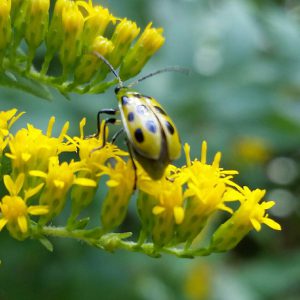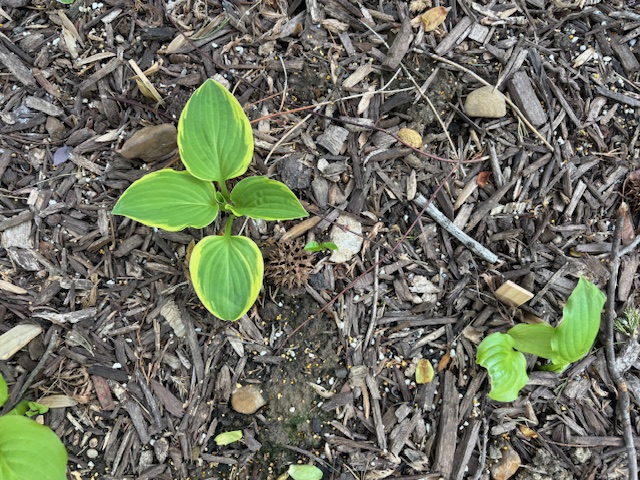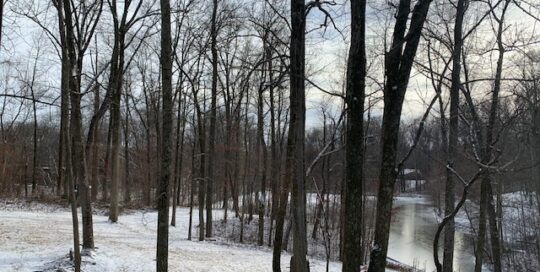A Cinderella Story: Goldenrod
Views: 4635

My Wonderful Husband mentioned it was “meteorological autumn” today. I looked at him somewhat blankly (I hadn’t had my morning coffee yet). He explained there is astronomical fall, which begins on September 22 and there is meteorological autumn, which begins on September 1. There are other not-so-scientific signs of autumn: the fall decorations and the pots of mums at the stores; the black tupelo tree leaves turning brilliant crimson, goldenrod blooming and allergy season.
Beautiful, native goldenrods (Solidago sp.) get the rap for hay fever actually caused by ragweed (Ambrosia sp.). Why? Because they bloom at pretty much the same time and while ragweed blooms are inconspicuous, goldenrod blooms are spectacular. So, people started sneezing, saw the goldenrod blooms and blamed a perfectly innocent plant.
Both belong to the Aster family (Asteraceae), but goldenrod is Cinderella while ragweed is the evil, ugly stepsister. Ragweed depends on the wind to spread its pollen (which explains why you sneeze) while goldenrod depends on pollinators – bumblebees, butterflies and others.
Europe v America
Ironically, European gardeners have been proudly growing this native North American for years while we have snubbed it. Although your neighbors might worry about you, goldenrods can and should be part of your gardens. Although there are at least 77 species of goldenrods in the USDA’s plant database, your choices will be limited by the plants you can find and transplant or seeds ordered from native plant and seed providers. S. nemoralis will grow in poor, dry soil and will stay about two feet high. Blue-stemmed goldenrod (S. caesia) is a woodland species. Late goldenrod (S. gigantea) can grow up to six feet tall. They prefer full sun to shade and with wet to medium moisture levels. This one can spread aggressively by underground rhizomes, so bear that in mind when you decide where to plant it.
Plant Care
Showy goldenrod (S. speciosa) likes medium to dry soils, being fed in the spring, grows two to three feet tall, blooms into October with red stems and yellow plume-like flowers.
There are also commercially available cultivars available, such as “Baby Sun” which grows to about two feet. This variety doesn’t flop over as easily and blooms a bit earlier than some of the “goldies”.
“Golden Fleece” stays under two feet high and blooms from late August to late October. This makes it a great season-extender for bees, butterflies and other pollinators. If you have a wooded, semi-shady area, Solidago rugosa “Fireworks” is a woodlander and likes medium to wet soils, which is unusual for goldenrods.
So, take a lesson from the European gardeners – plant some goldenrod for autumn interest (whether it’s meteorological or astronomical autumn). The birds, butterflies and bees will appreciate this Cinderella!
Meet Dona Bergman
Dona Bergman is a founding member, Southwest Indiana Chapter of the Indiana Native Plant & Wildlife Society, and an Advanced Master Gardener.







